by Christopher S. | Mar 11, 2025 | Blogs |
Understanding App Store Listing Optimization
App store listing optimization is a crucial strategy for increasing app visibility, downloads, and overall success. By leveraging ASO best practices, developers can enhance app store exposure, leading to better rankings and improved conversion rates.
Why App Store Listing Optimization Matters
App store exposure plays a critical role in driving downloads. A well-optimized listing can improve your app’s discoverability, leading to higher engagement and revenue potential.
The Fundamentals of ASO Best Practices
- Keyword Optimization: Placing relevant keywords strategically in the title and description.
- Visual Appeal: High-quality icons, screenshots, and promotional videos.
- Ratings & Reviews: Encouraging user feedback for credibility.
Conducting Keyword Research for ASO
Using tools like Google Keyword Planner, App Annie, and Sensor Tower can help identify high-performing keywords.
Writing an Engaging App Title and Subtitle
- Keep it short and memorable.
- Incorporate primary keywords without stuffing.
Optimizing Your App Description
- Use bullet points for readability.
- Place primary keywords naturally.
- Include a strong call-to-action.
The Importance of App Icons and Screenshots
Your icon should be unique, professional, and easy to recognize. Screenshots should highlight key app features and benefits.
Using Videos to Boost Engagement
A well-crafted video can demonstrate your app’s features effectively, increasing conversion rates.
The Role of App Ratings and Reviews
Encourage positive feedback by providing excellent user experience and responding to reviews professionally.
Leveraging Backlinks and Social Proof
- Share your app link on blogs, forums, and social media.
- Encourage influencers to review your app.
A/B Testing for App Store Listings
- Experiment with different titles, descriptions, and visuals.
- Use tools like Google Play Experiments to track results.
Localizing Your App for a Global Audience
Translating your app listing can help reach a wider audience and increase downloads in international markets.
The Role of Updates and Maintenance in ASO
Regular updates improve app performance and user satisfaction, boosting rankings in app stores.
Tracking ASO Performance and Metrics
Monitor key metrics like conversion rates, keyword rankings, and download trends using ASO tools.
Common ASO Mistakes and How to Avoid Them
- Overstuffing keywords.
- Neglecting user feedback.
- Poor-quality visuals.
FAQs
What is app store listing optimization?
App store listing optimization (ASO) is the process of improving an app’s visibility and ranking in app stores through strategic keyword placement, visuals, and user engagement.
How often should I update my app listing?
Regular updates (every 4-6 weeks) keep your app relevant and improve rankings.
How can I improve my app’s ratings?
Encourage satisfied users to leave reviews and respond to negative feedback professionally.
Does ASO differ for Google Play and the App Store?
Yes, Google Play relies more on descriptions for keyword indexing, while the App Store prioritizes metadata fields.
What tools can help with ASO?
Popular ASO tools include App Annie, Sensor Tower, and Mobile Action.
Can social media help with ASO?
Yes, promoting your app on social media can drive traffic and improve rankings.
Conclusion
Mastering app store listing optimization is essential for maximizing app store exposure and increasing downloads. By implementing ASO best practices, you can improve rankings, enhance user engagement, and boost your app’s success.
by Christopher S. | Feb 19, 2025 | Blogs |
In today’s digital landscape, customer reviews play a pivotal role in determining a business’s success. Review in website is essential for improving credibility and attracting more customers. Review sites act as trusted platforms where users share their experiences, influencing purchasing decisions and brand reputation. This article explores the top 10 review sites that can help businesses enhance their credibility and improve their review in website.
1. Apps Mamma

Apps Mamma is an ideal platform for businesses looking to get their mobile apps reviewed by professionals. The site offers detailed insights into app performance, usability, and market potential.
Key Benefits:
- Provides expert app reviews
- Helps developers gain visibility
- Enhances app credibility in the marketplace
Website URL: https://appsmamma.com/
2. Apps Thunder

Apps Thunder is a dedicated platform for mobile applications and software reviews. It offers unbiased reviews to help consumers make informed decisions.
Key Benefits:
- In-depth analysis of apps
- Focuses on Android and iOS platforms
- Boosts app downloads through visibility
Website URL: https://appsthunder.com/
3. Gadget 400

Gadget 400 is a trusted review site focusing on electronic gadgets, apps, and software solutions. Businesses in the tech industry benefit significantly from positive reviews on this platform.
Key Benefits:
- Covers a wide range of tech products
- SEO-friendly content for better reach
- Helps in brand positioning
Website URL: https://gadget400.com/
4. Web App Rater

A popular choice for reviewing web applications, Web App Rater provides valuable insights into the latest web-based solutions.
Key Benefits:
- Caters to SaaS and web apps
- Helps in improving app engagement
- Provides genuine user feedback
Website URL: https://webapprater.com/
5. Apps Listo

Apps Listo specializes in reviewing mobile applications, ensuring developers get the exposure they need to succeed.
Key Benefits:
- Supports indie developers
- Offers detailed reviews
- Increases app discoverability
Website URL: https://appslisto.com/
6. Apps 4 Review

Apps 4 Review provides unbiased, detailed assessments of mobile apps, ensuring businesses can enhance their app reputation.
Key Benefits:
- Enhances credibility for new apps
- Drives organic downloads
- Builds user trust
Website URL: https://apps4review.com/
7. Apps Mirror

Apps Mirror is a go-to platform for businesses that want their apps to reach a broader audience through quality reviews.
Key Benefits:
- Covers diverse app categories
- Offers promotional opportunities
- Helps in ASO (App Store Optimization)
Website URL: https://appsmirror.com/
8. Game 400

If you have a gaming app, Game 400 is the perfect platform to get reviews that attract gamers and investors.
Key Benefits:
- Specializes in gaming app reviews
- Improves app engagement
- Increases in-game purchases
Website URL: https://game400.com/
9. App iod

App Iod provides insights into various mobile apps, assisting businesses in standing out in a competitive market.
Key Benefits:
- Focuses on detailed user experience
- Encourages app improvements
- Drives better retention rates
Website URL: https://appiod.com/
10. Apps 400

Apps 400 is an extensive review platform that covers both mobile apps and software, ensuring maximum exposure for businesses.
Key Benefits:
- Covers a variety of software categories
- Improves brand credibility
- Provides valuable industry insights
Website URL: https://apps400.com/
11. Apps Times

Apps Times is another essential review site that enhances visibility and credibility for mobile applications.
Key Benefits:
- Offers expert reviews
- Helps in app promotion
- Attracts targeted audiences
Website URL: https://appstimes.in/
FAQs
1. Why is review in website important for businesses?
Review in website helps businesses build credibility, attract customers, and enhance their online reputation.
2. Which review site is best for improving review in website?
Web App Rater, Apps Mamma, and Apps Thunder are great platforms for improving review in website.
3. How do review sites improve SEO?
Positive reviews on reputable platforms increase backlinks, improve domain authority, and enhance search rankings, leading to better review in website.
4. Can review sites help in lead generation?
Yes, businesses can attract potential customers by showcasing positive reviews and improving their review in website.
5. How often should businesses update their review in website?
Regular updates ensure credibility and show potential customers that the business is active and engaging.
Conclusion
Using these top 10 review sites, businesses can enhance their online presence, build trust, and improve their review in website. Whether you’re promoting an app, a service, or a product, leveraging these platforms will significantly impact your growth.
For expert app marketing strategies that drive downloads and visibility, visit App Marketing Plus. 🚀
by Christopher S. | Jan 24, 2025 | Blogs |
Introduction
Organic app installs play a critical role in the sustainable growth of any mobile application. Unlike paid installs, which can drain budgets quickly, organic installs build a loyal user base by leveraging search engine optimization (SEO) and app store optimization (ASO). In this guide, we’ll explore strategies to boost app installs organically and highlight actionable steps to implement these techniques effectively.
What is SEO?
Search Engine Optimization (SEO) is the process of improving the visibility of a website or web page on search engines like Google. By using targeted keywords, optimizing content, and building high-quality backlinks, SEO drives organic traffic that can be converted into app installs. For example, a website optimized with relevant app-related keywords can lead users directly to the app store page.
Why is SEO Important?
SEO ensures that your app reaches the right audience by ranking high on search engine results pages (SERPs). A strong SEO strategy not only drives traffic but also enhances brand credibility.
What is ASO?
App Store Optimization (ASO) focuses on improving the visibility of an app within app stores like Google Play and Apple’s App Store. It involves optimizing app titles, descriptions, keywords, and visuals such as screenshots and videos.
Differences Between SEO and ASO
While SEO targets web search engines, ASO is specific to app stores. Both, however, aim to improve discoverability and drive organic growth.
Why Boost App Installs Organically Matters
Organic installs come with numerous advantages, including:
- Cost-Effectiveness: No need to spend on ads.
- Long-Term Benefits: Builds a steady stream of users over time.
- Higher Retention Rates: Organic users are more likely to engage with your app.
Investing in SEO and ASO ensures sustainable growth without relying heavily on paid advertising.
The Role of Keywords in SEO and ASO
Keywords are the backbone of both SEO and ASO. Conducting thorough keyword research helps identify terms your target audience is searching for. Tools like Google Keyword Planner and App Store Optimization platforms can assist in discovering high-performing keywords.
Tips for Keyword Placement
- Use primary keywords in titles and headings.
- Incorporate secondary keywords naturally within the content.
- Avoid keyword stuffing, as it can negatively impact rankings.
On-Page SEO Techniques to Boost App Installs Organically
On-page SEO involves optimizing individual web pages to rank higher and attract more visitors. Here’s how:
- Optimize Meta Tags: Include app-related keywords in meta titles and descriptions.
- Create Engaging Content: Blog posts, tutorials, and FAQs about your app.
- Internal Linking: Link to your app’s landing page from other parts of your site.
Off-Page SEO Strategies for App Promotion
Off-page SEO focuses on activities outside your website that influence rankings:
- Backlink Building: Collaborate with reputable sites to link back to your app page.
- Social Media Marketing: Share app-related updates and engage with users.
- Influencer Partnerships: Work with influencers to promote your app organically.
App Store Optimization (ASO) Best Practices
To enhance app visibility within stores:
- Craft an Attention-Grabbing Title: Use keywords and keep it concise.
- Write a Persuasive Description: Highlight key features and benefits.
- Use High-Quality Visuals: Screenshots and videos should showcase the app’s value.
- Encourage User Reviews: Positive feedback improves rankings.
Creating High-Quality Content
Content marketing is a powerful tool for driving organic installs. Consider:
- Blogs: Share tips, updates, and industry news related to your app.
- Videos: Create tutorials and promotional videos.
- Social Media Posts: Regularly update your audience with engaging content.
Leveraging Analytics to Improve Strategies
Analytics tools like Google Analytics and App Annie provide insights into user behavior. Track metrics such as:
- Traffic Sources: Determine where your audience is coming from.
- Keyword Performance: Assess which keywords drive the most traffic.
- Conversion Rates: Analyze how many visitors convert into app users.
The Role of Reviews and Ratings
Positive reviews and high ratings build trust and improve app store rankings. Encourage users to leave reviews by:
- Offering incentives like discounts or premium features.
- Sending in-app reminders post-interaction.
- Responding to reviews to show appreciation.
Common Mistakes to Avoid in SEO and ASO
- Ignoring Keyword Research: Leads to targeting irrelevant terms.
- Overlooking User Experience: Poor app performance can harm ratings.
- Neglecting Analytics: Without data, optimizing strategies becomes difficult.
Tools to Enhance SEO and ASO
Leverage tools like:
- SEMRush: For keyword research and SEO tracking.
- AppFollow: To monitor app store performance.
- Moz: For analyzing backlinks and on-page SEO.
FAQs
1. What’s the difference between SEO and ASO?
SEO targets search engines, while ASO focuses on app stores. Both aim to improve visibility and attract users.
2. How long does it take to see results?
It varies, but consistent efforts in SEO and ASO can yield results within 3-6 months.
3. Can I do SEO and ASO on my own?
Yes, but using tools and consulting experts can accelerate success.
4. What are the best tools for ASO?
Tools like AppFollow, Sensor Tower, and Mobile Action are highly recommended.
5. How important are app reviews?
Very important—positive reviews boost rankings and build trust.
6. Is paid advertising necessary if I focus on organic growth?
While not essential, it can complement organic efforts during the initial stages.
Conclusion About boost app installs organically
To boost app installs organically, integrate SEO and ASO strategies effectively. Regularly analyze performance metrics, adapt your methods, and focus on delivering value to users.
by Christopher S. | Dec 12, 2024 | Blogs, Mobile App Development |
Introduction
So, you’ve developed your first app, and now you’re ready to share it with the world. But where do you start? Welcome to the Play Store Console —a tool that bridges the gap between your app and millions of potential users.
The Play Store Console is essential for Android developers, allowing you to upload, manage, and analyze your apps. Whether you’re a beginner or an experienced developer, this guide will help you master every aspect of the Play Store Console.
Setting Up Your Developer Account
Prerequisites for Creating an Account
Before you dive in, you’ll need a few things:
- A Google account.
- A one-time developer registration fee of $25.
- Basic information like your name, email, and payment details.
Step-by-Step Guide to Signing Up
- Visit the Google Play Console.
- Sign in with your Google account.
- Fill in the required details, including developer name and email.
- Pay the registration fee via a valid payment method.
- Complete the verification process by submitting your ID if required.
Navigating the Play Store Console Interface
Overview of the Dashboard
The dashboard is your command center. It provides an overview of your apps, their status, and performance metrics.
Key Sections and Their Functionalities
- Dashboard: Quick stats and alerts.
- App Management: Tools for uploading and managing apps.
- Monetization: Pricing, in-app purchases, and subscriptions.
- Reports: Detailed analytics on downloads, crashes, and user engagement.
Preparing Your App for Launch
Setting Up Your App
Start by clicking the “Create App” button on the dashboard. Enter the app’s name, select its default language, and choose whether it’s a game or a regular app.
Adding App Details
Your app’s description, images, and videos make the first impression.
- Use engaging language in your description.
- Add high-quality screenshots and an attractive app icon.
Uploading Your App
Preparing Your APK/AAB File
Your app file must be in either APK or AAB format. Test it thoroughly using tools like Android Studio to ensure compatibility with all devices.
Uploading and Reviewing Your App
Click on “App Releases,” choose a release type (internal, beta, or production), and upload your file. Address any warnings or errors before proceeding.
Managing Store Listings
Crafting an Appealing Listing
Catchy titles and clear descriptions are key to attracting users. Ensure your app’s visuals stand out.
Using Keywords for ASO
Research and include keywords that potential users might search for. Tools like Google Keyword Planner can help.
Setting App Pricing and Distribution
Decide whether your app will be free or paid. Choose regions where your app will be available.
Testing Your App
Set up testing tracks for internal and external testers. Their feedback will help refine your app before launch.
Publishing Your App
Review all the details, ensure compliance with Play Store policies, and submit your app for review. The process usually takes a few days.
Analyzing App Performance
Using Analytics Tools
Track downloads, user demographics, and crash reports to understand how your app is performing.
Managing User Feedback
Respond to reviews promptly and take feedback seriously—it’s the key to improvement.
Updating and Maintaining Your App
Regular updates keep your app relevant. Test new features before releasing updates to avoid bugs.
Troubleshooting Common Issues
From upload errors to policy violations, familiarize yourself with common issues and how to resolve them. The Google Play Help Center is a great resource.
Conclusion
Congratulations! You’re now equipped to navigate the Play Store Console like a pro. Remember, mastering the console is an ongoing process. Keep exploring, experimenting, and learning.
FAQs
1.What is the Play Store Console?
The Play Store Console is a platform that allows developers to upload, manage, and analyze their Android apps.
2.How much does it cost to publish an app on the Play Store?
A one-time registration fee of $25 is required.
3.Can I update my app after publishing?
Yes, you can submit updates anytime.
4.How long does the app review process take?
It typically takes 3-7 days, but it can vary.
5.Is it possible to unpublish an app temporarily?
Yes, you can unpublish your app and make it unavailable to new users.
by Christopher S. | Nov 20, 2024 | Blogs, games |
90’s kids in India grew up with some iconic games that became timeless classics. From playing on old consoles and arcade machines to experiencing the thrill on the first mobile phones, these games bring back the cherished memories of a simpler time. Thankfully, many of these classics are now available on mobile, so you can relive the magic anytime and anywhere. Here’s a detailed look at the Best Mobile Games for 90’s Kids in India that are perfect for a trip down memory lane.
1. Super Mario Run

About the Game:
Super Mario Run is one the best Best Mobile Games for 90’s Kids in India. It brings back everyone’s favorite plumber in a modern mobile format. Developed by Nintendo, the game keeps the classic elements that fans love—jumping, coin collection, and defeating enemies—with easy tap-to-jump mechanics perfect for mobile.
Why 90’s Kids Love It:
Super Mario was a staple in most 90’s childhoods, especially on consoles like the NES. The mobile version blends nostalgia with modern graphics, making it a refreshing yet familiar experience.
Key Features:
- Unique “one-tap” gameplay designed for mobile.
- Classic characters and levels.
- New elements like Toad Rally mode and Kingdom Builder mode to customize your own kingdom.

2. Sonic the Hedgehog Classic

About the Game:
Sonic the Hedgehog Classic lets players step back into the vibrant world of Sega’s beloved mascot, Sonic. Known for its high-speed gameplay, this game remains faithful to the original, giving players the same thrill of racing through zones and collecting rings.
Why 90’s Kids Love It:
The colorful visuals, catchy soundtrack, and fast-paced action made Sonic unforgettable. On mobile, it’s a perfect representation of Sega’s retro charm.
Key Features:
- Remastered for mobile with updated graphics.
- Playable offline for easy access.
- Familiar zones and characters like Dr. Robotnik (Eggman).

3. Tetris
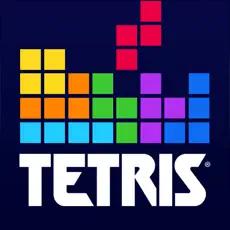
About the Game:
Tetris is the timeless puzzle game that has been a staple across generations. On mobile, Tetris is available with the same simple mechanics—rotating and fitting blocks—but with modern updates like multiplayer modes and tournaments.
Why 90’s Kids Love It:
Simple yet challenging, Tetris became popular across arcades, consoles, and mobile phones. It’s still one of the most addictive games, ideal for quick play sessions.
Key Features:
- Modern and classic modes available.
- Online multiplayer and competitive leagues.
- Intuitive swipe controls perfect for mobile gameplay.

4. Pac-Man

About the Game:
Pac-Man is the classic maze game where players guide Pac-Man through a series of levels, eating pellets and avoiding ghosts. This mobile version stays true to the original gameplay, while adding new levels and challenges for added excitement.
Why 90’s Kids Love It:
Pac-Man is a universal icon of arcade gaming, and this mobile adaptation keeps the retro charm with its bright visuals and classic sound effects.
Key Features:
- Simple and intuitive controls.
- Regularly updated with new levels and mazes.
- Power-ups and bonus levels to enhance gameplay.

5. Contra Returns

About the Game:
Contra Returns reimagines the arcade favorite with updated graphics and new gameplay modes. Players can choose between single-player and co-op modes, battling through levels filled with enemies, power-ups, and boss fights.
Why 90’s Kids Love It:
Contra was the ultimate challenge in its day, known for its intense difficulty. This version keeps the original spirit alive with modern visuals and controls.
Key Features:
- Multiple playable characters and weapons.
- Classic side-scrolling action mixed with modern graphics.
- PvP mode for a competitive edge.

6. Ludo King

About the Game:
Ludo King is a digital version of the beloved board game, Ludo. It’s ideal for family gatherings, letting friends and relatives play together across devices.
Why 90’s Kids Love It:
Ludo is a traditional game in India, often played with family and friends. This app lets players relive those fun moments online, making it accessible anytime.
Key Features:
- Multiplayer mode (online and local).
- Fun emojis and chat options to connect with other players.
- Supports cross-platform play between Android, iOS, and desktop.

7. Snake ‘97

About the Game:
Snake ‘97 is the Best Mobile Games for 90’s Kids in India. It is a remake of the iconic Nokia Snake game, with the same pixelated graphics and retro charm that made it an early mobile gaming favorite.
Why 90’s Kids Love It:
Before smartphones, Nokia’s Snake was one of the few mobile games around. It’s incredibly simple yet addictive, making it the perfect way to relive early mobile gaming.
Key Features:
- Authentic pixelated graphics from the original Nokia phone display.
- Multiple difficulty levels.
- Simple gameplay mechanics, perfect for quick sessions.

8. Street Fighter IV Champion Edition

About the Game:
Street Fighter IV Champion Edition brings the classic fighting game to mobile with high-quality graphics and responsive controls. Players can choose from classic fighters like Ryu, Ken, and Chun-Li.
Why 90’s Kids Love It:
Street Fighter was a must-play at arcades, and this version brings the competitive thrill to mobile. The character roster and special moves are the same, bringing the arcade experience to your fingertips.
Key Features:
- Diverse roster of fighters and move sets.
- Online multiplayer for real-time competition.
- Enhanced controls and customizable settings for mobile.

9. Prince of Persia: Escape

About the Game:
Prince of Persia: Escape is an endless runner that’s inspired by the classic platform game, where players navigate a prince through challenging levels filled with traps and obstacles.
Why 90’s Kids Love It:
Prince of Persia introduced gamers to adventure games with challenging puzzles and suspenseful gameplay. This mobile adaptation captures that thrill while adapting to a mobile-friendly, endless runner format.
Key Features:
- Classic side-scrolling action with modern graphics.
- Exciting levels with traps and obstacles.
- Fast-paced gameplay that retains the original’s adventure vibe.

10. Bomberman Classic Games

About the Game:
Bomberman is all about strategy—players place bombs to navigate mazes and defeat enemies. This mobile version recreates the feel of the original Bomberman while adding new multiplayer options.
Why 90’s Kids Love It:
Bomberman was a go-to for multiplayer gaming in the 90’s, especially for its strategic gameplay. This version keeps the classic elements and adds online play for an extra layer of fun.
Key Features:
- Classic Bomberman mechanics with modern graphics.
- Multiplayer mode for competitive fun.
- Multiple levels and challenges to test your strategy skills.

Wrapping Up
These mobile games are Best Mobile Games for 90’s Kids in India. Let 90’s kids in India relive their golden gaming days in a modern way. From the colorful world of Mario to the intense action of Contra, these games bring back the classic characters, sounds, and gameplay that defined a generation. Whether you’re playing alone or with friends, these mobile adaptations are the perfect way to revisit the magic of the 90’s
If you’re a developer or publisher aiming to bring your app to the forefront, App Marketing Plus can be your key to success. Effective app marketing Services ensures your game stands out in the crowded app marketplace. By leveraging expert App Marketing Plus, your game can reach its full potential, connecting with nostalgic players and modern gamers alike. Start your journey today and let your app create timeless memories for the next generation!
by Christopher S. | Nov 7, 2024 | App Store Optimization, Blogs |
Introduction About Top ASO Tools
With the sheer volume of apps available in 2024, standing out in the app stores has never been more challenging. This is where App Store Optimization (ASO) comes into play. ASO is like SEO for apps, aiming to improve app visibility, attract more downloads, and ultimately secure app success in a crowded market. Let’s dive into the top ASO tools that can help you make a powerful impact in the app store.
What is ASO and Why is it Crucial?
ASO encompasses strategies and techniques to improve app ranking in search results within app stores. A good ASO strategy focuses on optimizing keywords, app descriptions, visuals, and user feedback to boost visibility and download rates.
Factors Influencing ASO
Several factors drive ASO success, and understanding them helps in selecting the right ASO tools:
- Keywords and Metadata: Proper keyword usage in titles and descriptions ensures your app appears in relevant searches.
- User Reviews and Ratings: High ratings improve visibility and encourage downloads.
- Visuals and User Experience: Screenshots, videos, and app icons significantly impact conversion rates.
Top ASO Tools to Use in 2024
To achieve the best results, here’s a curated list of the top ASO tools designed to meet various ASO needs.
#1: AppTweak
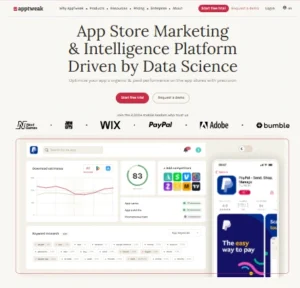
Key Features: AppTweak provides data-driven insights on keywords, ad intelligence, and ASO performance across app stores.
Pros: Known for its robust keyword research features and user-friendly interface.
Cons: Pricing might be a bit high for smaller developers.
Website URL: www.apptweak.com
#2: Sensor Tower

Key Features: Sensor Tower specializes in competitive analysis, giving insights into how your app stacks up against competitors.
Pros: Exceptional for tracking competitor performance and identifying emerging trends.
Cons: Not as focused on keyword discovery for beginners.
Website URL: www.sensortower.com
#3: AppFollow
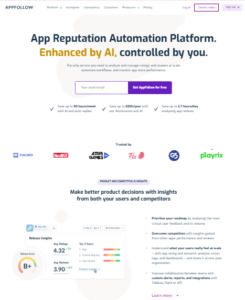
Key Features: AppFollow emphasizes tracking user feedback, helping you respond to reviews and ratings efficiently.
Pros: Great for maintaining a positive user rating, which can boost visibility.
Cons: Limited in keyword optimization tools compared to others.
Website URL: www.appdollow.io
#4: Mobile Action
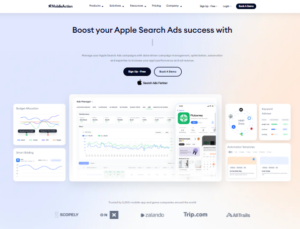
Key Features: Known for its unique advertising insights, Mobile Action is excellent for those looking to integrate ASO with paid marketing.
Pros: Combines ASO with ad insights, making it ideal for a holistic approach.
Cons: Some features are limited in the free version.
Website URL: www.mobileaction.co
#5: TheTool

Key Features: TheTool’s intuitive dashboard allows you to monitor all ASO metrics in one place.
Pros: Perfect for beginners due to its ease of use and visual representation of ASO metrics.
Cons: Lacks advanced features required by more experienced ASO professionals.
Website URL: www.thetool.io
#6: ASOdesk
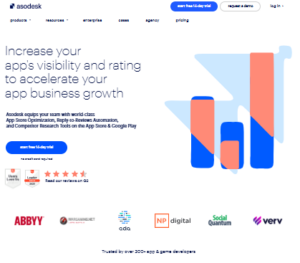
Key Features: ASOdesk stands out for its ability to generate keyword suggestions tailored to your app’s niche.
Pros: Ideal for keyword discovery, especially for niche apps.
Cons: Limited in tracking visual assets compared to other tools.
Website URL: www.asodesk.com
#7: Keyword Tool
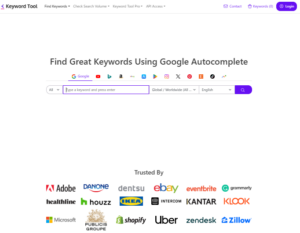
Key Features: Keyword Tool focuses on keyword discovery and tracking, which is central to improving app search rankings.
Pros: Excellent for those focused primarily on keyword optimization.
Cons: Limited in competitive insights.
Website URL: www.keywordtool.io
Comparing Paid vs. Free ASO Tools
Free ASO tools can be great for startups with limited budgets, but paid tools often provide additional features, such as competitor analysis and ad insights. For scaling businesses, investing in a paid tool can deliver valuable, in-depth data that free tools may not offer.
How to Choose the Top ASO Tool for Your Needs
When selecting an ASO tool, consider your budget, primary goals (keywords, reviews, or competitive analysis), and the app’s current market position. For instance, a new app may prioritize tools focused on keywords, while a seasoned app may focus more on competitive analysis.
Best Practices for Using ASO Tools
- Regularly Update Keywords: App trends shift often; updating keywords monthly can help maintain relevance.
- Engage with User Feedback: Responding to reviews, especially negative ones, can improve ratings.
- Track Competitors: Monitoring competitor strategies can reveal gaps or new opportunities for optimization.
Conclusion
In today’s competitive app market, having the Top ASO tools can make all the difference between getting noticed and getting lost. By leveraging top tools like AppTweak, Sensor Tower, and Mobile Action, app developers can optimize keywords, monitor competitors, and engage users effectively, driving more downloads and engagement.
To further enhance your app’s reach and success, consider partnering with App Marketing Plus. As a dedicated app marketing agency, App Marketing Plus specializes in boosting app visibility, user acquisition, and downloads through advanced ASO strategies tailored to your app’s unique needs. From keyword optimization to conversion-focused advertising, we provide everything you need to stand out in the app store. Ready to make your app shine? Visit App Marketing Plus today and start maximizing your app’s potential!
FAQs
1. What is the Top ASO tool for beginners?
For beginners, tools like The Tool and AppTweak are great due to their user-friendly interfaces and essential ASO features.
2. How often should I update my ASO strategy?
Ideally, update your ASO strategy every 30-60 days to align with trends and maintain keyword relevance.
3. Can Top ASO tools replace an ASO specialist?
No, while ASO tools are powerful, they complement rather than replace the expertise and strategy of a specialist.
4. What’s the average cost of Top ASO tools?
Prices vary widely, from free to several hundred dollars per month depending on the features and capabilities.
5. Do ASO tools work for both iOS and Android?
Yes, most ASO tools offer support for both iOS and Android platforms, but it’s wise to confirm compatibility.

























